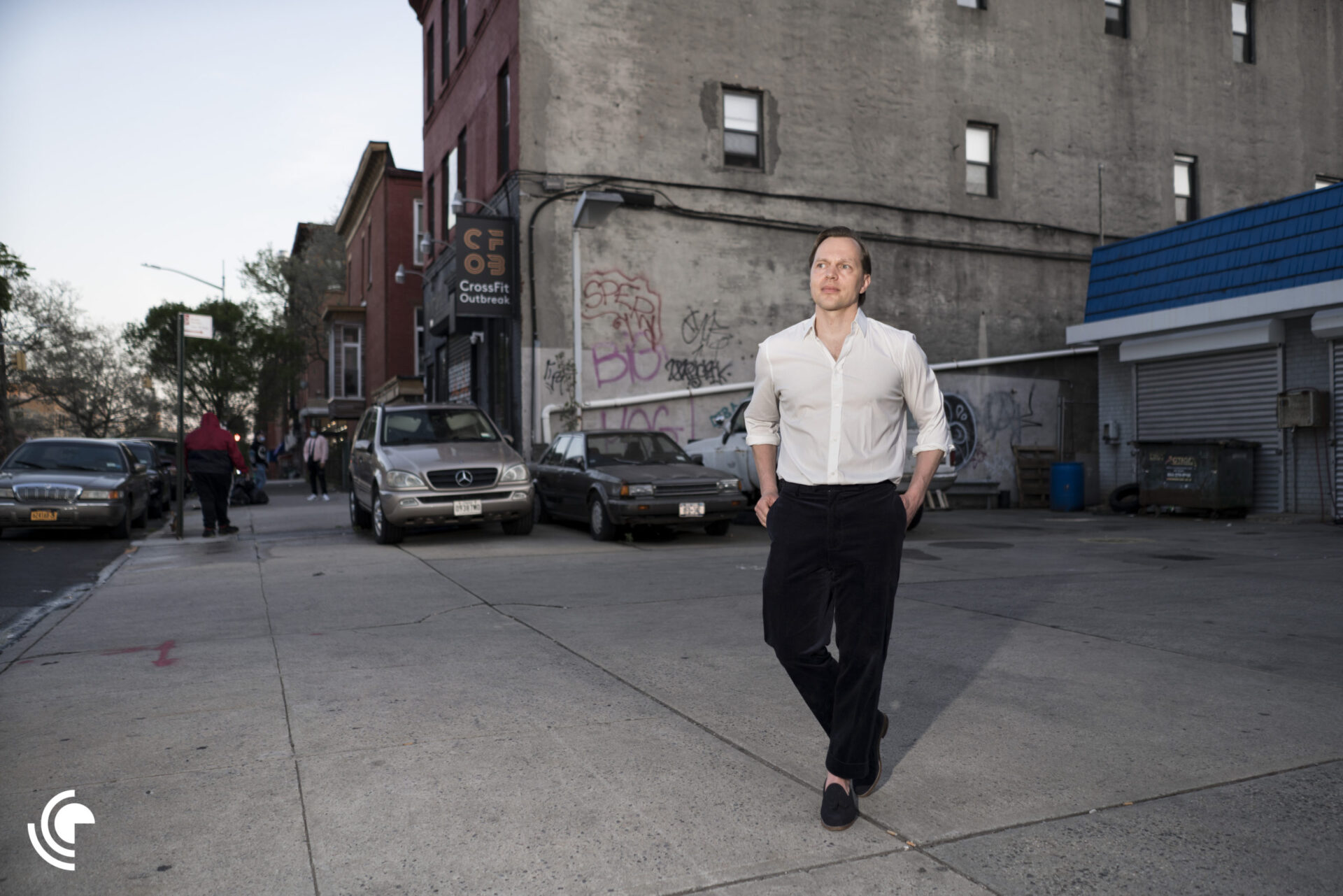How response by luxury brands to the digital age misses the big opportunity
A Gemic Whitepaper Luxury has had a difficult few years. The sector has, at various points, appeared to be stagnating. Various established brands, like Ralph Lauren and Chanel, have seen their equity eroded. Other brands have been propped up by high demand in Asian markets. However, recently, the rise of the more discerning, prudent consumer has meant that even this cannot be taken for granted.
One of the clearest explanations for luxury’s travails has been the sector’s inability to keep pace with large-scale cultural shifts. Specifically, luxury has failed to keep up with the new values and consumption habits heralded by the rise of digital technologies.
This has generated various mismatches between luxury brands and consumers. Luxury brands are centred on bricks and mortar retail, while consumers expect to shop online. Luxury brands seem aloof and impersonal, while digital technologies drive expectations of intimacy. Luxury brands rely on creating mystique via limiting information about products, while digital technologies democratise access to information. Luxury brands rely on formality and close control of the meanings that consumers ascribe to them, while digital technologies promote a culture of subversion and play.
In response, brands have embraced new technologies to create new, cutting-edge products, and to remould relationships with consumers. The strategies employed have been wide-ranging, as the following examples demonstrate:
Revamping instore experiences
Brands are using digital to create more immersive retail experiences. For example, Tissot allowed consumers to virtually “try on” their watches at London Selfridges and Harrod’s stores.
Becoming social media savvy
Old brands are reinventing themselves by mastering the mechanics of social media. The most notable success story is Gucci, which has revived its fortunes via its ironic and kitsch take on late 20th century luxury and “Instagrammable” products seemingly tailormade for Millennials and Generation Y.
Embracing online platforms
Online platforms such as Net-a-Porter and Farfetch are creating effortless connections between boutique luxury brands and consumers around the world.
Reinventing “analogue” technologies
Samsung and de Grisogono collaborated to reinvent the luxury watch. Whilst the design resembles a traditional luxury watch, it has a smartwatch interface and all the expected functionality. Apple incorporated luxury into its smartwatch via a special range with Hermes strap designs. EMEL + ARIS’ smart coat uses Far Infrared Technology to deliver heat energy that is absorbed by the skin to heat the muscles and increase blood flow.
The perils of technology worship
These strategies, which are all characterized by the worship of new technologies and a constitutive break from “old luxury”, have no doubt been successful for many brands. It would also be reasonable to claim that luxury’s technological revolution is spurring what, according to recent sales figures, is a modest sector-wide revival.
However, we are concerned that this is leading to the belief of “the only way for luxury brands to succeed today is to become symbols of digital progress” becoming orthodoxy. We believe that this will limit the opportunity for luxury.
Certainly, an uncritical embracing of digital technologies may limit the opportunities to create enduring and meaningful relationships with consumers. Since technology is constantly evolving, it leads to products and experiences that capture attention only fleetingly. In other words, it generates faddishness. This is fine for a brand like Gucci. As a fashion brand, faddishness is the nature of the game. Furthermore, propelled by CEO Marco Bizzarri and Creative Director Alessandro Michele, it seems happy to continually churn out new lines.
It is not clear that Instagrammable faddishness is the best strategy for brands outside fashion, or even others within fashion. Indeed, faddishness militates against signifying luxury. Much of luxury’s unique aura derives precisely from its non-faddishness. “True” luxury seems to have something timeless about it – an ability to combine past, present and future, and to conjure escape from a world of transience. Thus, it is not clear that many brands who simply chase digital trends are truly creating meaningful, long-lasting connections with consumers.
Luxury as a counterpoint to the digital age
To create authentic luxury whilst driving contemporary relevance, brands should consider an alternative and perhaps counterintuitive strategy: become not a symbol of digital progress, but a counterpoint to it.
Digital technologies are actually an ambivalent presence in consumers’ lives. On the one hand, they have created a new culture of personal choice, mobility and convenience. The smartphone, to offer only the most obvious example, allows consumers to instantly complete a range of activities that previous generations would have found mindboggling.
On the other hand, the digital age is beset by a profound crisis of meaning. It is a crisis that manifests itself in diverse ways, from the mental health crisis amongst always-on Millennials, to culture wars, to the widespread embracing of political options that previous generations would have found unpalatable.
The fundamental challenge of the digital age is that sources of meaning foundational to human wellbeing that previous generations took for granted have become scarce. Amongst them are community, connection with nature, time, and deep connections with material objects.
Across global culture, we detect a desire to escape the superficiality, relentlessness and ephemerality of digital culture. Truly meaningful products and experiences offer precisely the opposite: depth over superficiality, calm over relentlessness, timelessness over ephemerality.
This represents a powerful opportunity for luxury. More than mass or premium, luxury can offer products and experiences that meet consumer desires to transcend problematic everyday realities, and to experience the sublime.
The meaningfulness and depth the consumer demands is one that is, as it happens, embedded in the historic cultural meanings of luxury. However, many luxury brands lost touch with them during the era of late twentieth century gaudy superficial excess. Thus, for some brands, it is a question of rediscovering these old values and finding new ways to deliver them.
Meaning can be offered by products, but experiences are increasingly key. Whilst we are sceptical of some of the more hyperbolic pronouncements of “the experience economy” thesis, the importance of experiences in contemporary luxury is undeniable. In a world saturated with material possessions, experiences do often seem like the best way of connecting consumers with sources of meaning lost in the digital age.
It is important to emphasise, however, that being a counterpoint to the digital age is not about offering ways for the consumer to simply reject the digital. The new luxury consumer is not a luddite. Rather, it is about offering her the opportunity to have her cake and eat it: to live a digital life that is also connected to what is meaningful.
Thus, brands should not be troglodytes. All luxury brands must, to some extent, signify their membership of the digital age. For instance, it is hard to imagine a luxury brand succeeding today without a decent digital strategy. Brands need not be afraid of technology. However, it is important that it is not used to create frivolous, superficial experiences, but rather is put into the service of the meaningful connections that consumers desire.
We have identified two key strategic opportunities for luxury brands wishing to offer consumers a counterpoint to a world dominated by digital technologies.
Opportunity 1: Purposeful Craft
Purposeful Craft is based on the insight that what is truly scarce in a world of digital is deep, authentic relationships with objects. This depth can be provided by luxury objects that have an authentic provenance, are made via rituals of ingenuity and care, use the finest materials, are ethical, and often are nostalgic.
Around the turn of the millennium, style often seemed to matter more than substance. For example, Paris’ luxury scene was dominated by ‘porno chic’, epitomised by brands such as Louis Vuitton, Givenchy and Dior. Today, however, the equation is reversed. Many brands have gone back to their roots to locate substance. The likes of Louis Vuitton, Burberry and Hermes have gone back to their roots to signify depth. Products such as Burberry’s trench coat, with its century-old style, Montblanc’s Meisterstück ballpoint pen, and Hermes’ leather notebook covers, designed to last many years, have all become newly valued.
Today, the rituals of production are key. They can endow objects with what the cultural theorist Walter Benjamin referred to as “aura”—the sense of an object embedded in time and place. One form this takes is the rediscovery of old-fashioned methods of production. For example, selvedge denim brands like Kaihara and Naked and Famous utilise early industrial production methods like speciality looms and rope-dying to make their clothes. Or then there is the embracing of ‘exotic’ craft processes as in the case Raksasa Mod Vapes’ luxury vapes that are inspired by Hindu deities and hand-carved into Balinese wood by master craftsmen.
The increasing importance of craftsmanship as an antidote to digital faddishness already shows up in how consumers articulate their luxury preferences. In China today, the phrase “craftsmanship” is the word that most defines luxury for 64 percent of consumers, making it their most important consideration according to the market research firm Mintel.
Increasingly, ethics becomes a key part of the story, as awareness of the consequences of many production methods grows. The Food & Beverage industry is already undergoing a major transformation with consumers spending their money on specialty foods that offer authentic connections to craftsmanship, tradition, and ethical production processes. Since 2012 sales grew by more than 50% now topping USD 130 billions in the US alone.
Luxury is undergoing the same shift. Here, there is a role for technology to reinvent traditional production methods to divest them of ethically compromised elements. For example, Stella McCartney has recently been incorporating bio synthetic, biodegradable leather into her shoe designs. The Diamond Foundry produces laboratory-made diamonds to avert the environmental and human toll of the mining industry.
Opportunity 2: Transcendent Wellbeing
Transcendent Wellbeing is based on the insight that the digital age is creating a crisis of wellbeing. Millennials are recording record levels of depression, and workplace stress is at a high in the US and UK.
The crisis has multiple causes. Isolation is an important one. As described by MIT psychoanalyst Sherry Turkle in her books Alone Together and The Power of Conversation, digital technologies isolate us by encouraging us to stare at our phone screens. Rich face-to-face human relationships are replaced by attenuated online relationships, with adverse consequences for our sense of community.
Disconnection with nature is another. Nature is scientifically-proven to generate wellbeing. However, we are increasingly alienated from it. Life has long been urban for most people in developed countries, and urbanization continues unabated in developing countries. Two-thirds of the world’s people are expected to live in cities by 2050.
Finally, it is important to emphasise the scarcity of time. Material success used to be associated with the possession of time. The aristocratic lifestyle was associated with having time to indulge. However, today, the opposite is true. Material success is frequently associated with sacrificing time. For example, entrepreneurs like Jeff Bezos and Tim Cook boast of how little sleep they get by on. Digital technology is a chief driver of the scarcity of time, since technologies like smartphones and computers allow work to be conducted in any time and place.
These major drivers also increasingly show up in studies that survey how Americans assess their personal wellbeing. While 54% Americans state their stress level is usually high, fully 48% feel their stress has further increased over the past five years. Furthermore, at work, 40% of US adults describe their office environment as “most like a real-life survivor program” with a striking share of 41% of Americans who haven’t taken a single vacation day in 2015 according to the latest study of Pew Research Center.
In response to these threats to wellbeing, luxury brands should promise escape from the mundane, the potential for self-discovery, and a sense of the timeless.
Some are already. Livingston Manor Fly Fishing club offers luxury fishing trips that centre on community, reconnection with nature and enjoying peace and tranquillity. In China, Buddhism-inspired luxury hotels, spas and tea houses promise busy urbanites opportunities to recenter and reconnect.
Technology is also utilised to offer wellbeing experiences. Dornbracht Sensory Sky promises a multisensory shower experience that combines water, light and fragrance that gives the sensation of being outdoors.
Whilst many Transcendent Self-Discovery brands offer tranquillity and slowness, others promise self-discovery through responsible hedonism. The Burning Man festival beloved of Silicon Valley, with its emphasis on carnival, sexual exploration, wellbeing, and community, is a key example. Rich American consumers are travelling to South America for Ayahuasca retreats. Such retreats promise mind-altering experiences and the chance to explore new facets of the self.
These shifts in what people perceive as truly scarce already impact the travel industry in major ways. The type of travel that is aimed at improving one’s physical, emotional and/or spiritual well-being is growing double digit and is now a half-trillion-dollar market, accounting for 14% of all tourism revenues. It’s just a matter of time for this new value paradigm around Transcendent Wellbeing to play out in the luxury market as well.
Conclusion
It is indisputable that luxury brands need to respond to the rise of digital technologies in order to stay relevant. However, many brands have been thinking about this from a narrow and singular perspective. Brands have focused on an uncritical embracing, incorporating a number of technological trends in order to appear relevant. This misses what may be the true opportunity for many luxury brands: to provide a counterpoint to a world dominated by digital technologies. The digital age precipitates a crisis of meaning that provides powerful new opportunities for luxury brands. This article has briefly outlined two growth opportunities: Purposeful Craft and Transcendent Wellbeing.








